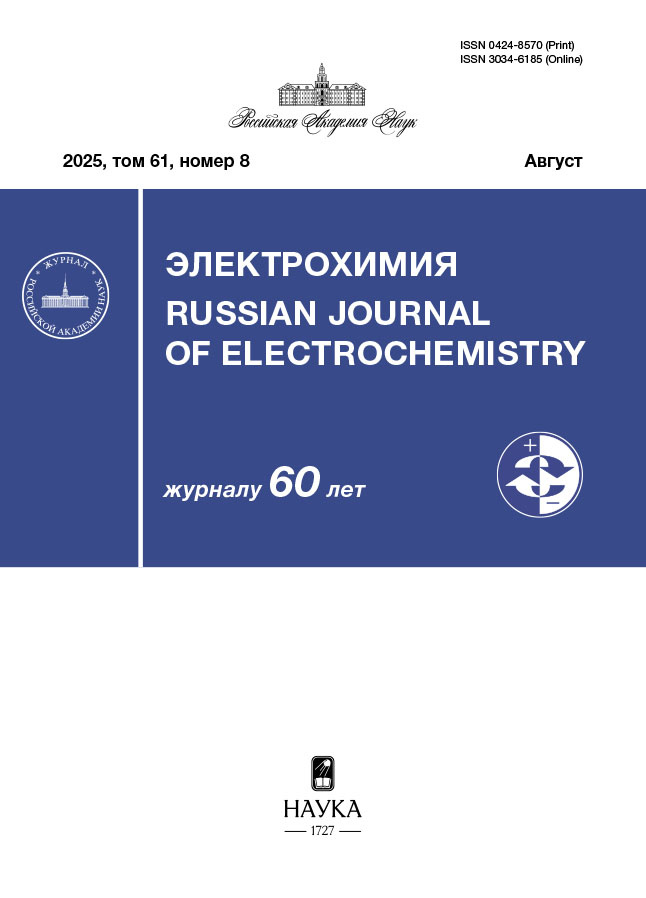Russian Journal of Electrochemistry
ISSN (print): 0424-8570
Media registration certificate: No. 0110270 dated 09.02.1993
Russian Journal of Electrochemistry is an international journal covering all aspects of research in Pure and Applied Electrochemistry as well as in Electrochemical Materials Science.
Founders
- Russian Academy of Sciences
- Frumkin Institute of Physical Chemistry and Electrochemistry RAS
Editor-in-Chief
Tsivadze A.Yu., academician RAS, Doctor of Sc., Full Professor
Frequency / Assess
12 issues per year / Subscription
Included in
White List (3rd level), Higher Attestation Commission List, RISC
Both original (full-size, short-communication and letter-to-editor types) and review manuscripts may be submitted in English or Russian by authors of any country(ies).
Current Issue
Vol 61, No 8 (2025)
Regular articles
ANHYDROUS HYDROGEN FLUORIDE AS A SOLVENT FOR ELECTROLYTES OF SUPERCAPACITORS OPERATING AT EXTREMELY LOW TEMPERATURES
Abstract
 357-363
357-363


Специальный выпуск “Электрохимия на ХХII Менделеевском съезде общей и прикладной химии”, октябрь 2024 г., Сириус, РФ
DEVELOPMENT OF MAGNETRON PROTECTIVE COATINGS OF CHROMIUM NITRIDES AND CARBIDES ON TITANIUM BIPOLAR PLATES OF A FUEL CELL WITH A PROTON-EXCHANGE MEMBRANE
Abstract
 367-379
367-379


Ni–Co-BASED ELECTRODES FOR OXYGEN EVOLUTION REACTION IN ALKALINE WATER ELECTROLYSIS
Abstract
 380-391
380-391


PROTECTIVE PROPERTIES OF ELECTROLITIC COATINGS BASED ON COBALT-MANGANESE SPINEL FOR SOLID OXIDE FUEL CELL INTERCONNECTS APPLICATION
Abstract
 392-399
392-399


INVESTIGATION OF THE PROCESS OF ELECTROCATALYTIC STARCH OXIDATION IN AN ACIDIC ENVIRONMENT WITH OXIDANT REGENERATION IN SITU
Abstract
 400-413
400-413


EVALUATION OF ANTI-CORROSIVE EFFICIENCY OF OMEPRAZOLE BY ELECTROCHEMICAL METHODS
Abstract
 414-421
414-421


Special issue based on the reports at the 17th International Meeting “Fundamental and Applied Problems of Solid State Ionics” (Chernogolovka, June 16–23, 2024)
DIELECTRIC RELAXATION AND PROTON CONDUCTIVITY OF SUBSTITUTIONAL SOLID SOLUTIONS AND COMPOSITES BASED ON POLYANTIMONIC ACID CONTAINING NIOBIUM (5+) IONS2
Abstract
 422-432
422-432












